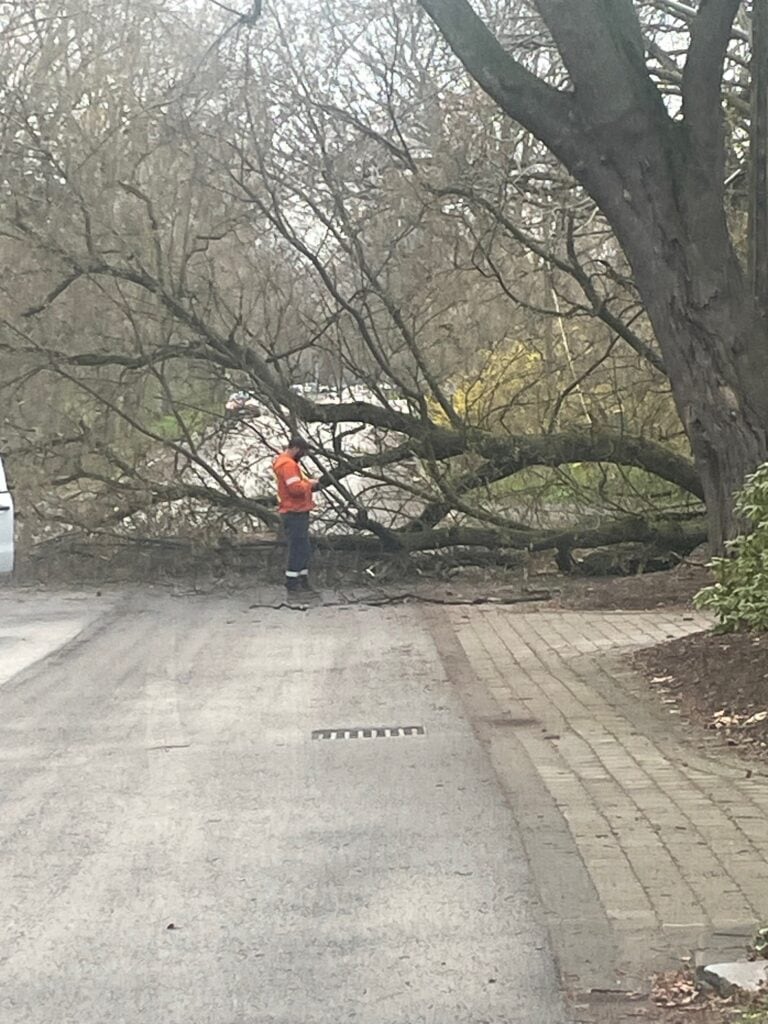A crowd of about 50 gathered under a canopy of trees in Ryerson Park last Thursday evening to share in the storied history of the Chautauqua neighbourhood.
The second annual Jane’s Walk for Chautauqua drew residents and even a few curious visitors.
Named in honour of famed urbanist Jane Jacobs, the community-organized walking tours explore neighbourhoods while sharing the stories that make those places special.
The walk around Chautauqua was organized by residents Jo-Ann Fraser and Dawn Orr.
“We thought, what a great opportunity to get together with some neighbours, learn a little bit about our community and to share some stories,” Fraser said.
This year’s gathering featured several returning speakers from last year, including Adam Martin, Kyra Simone and Rick Meloen.
Martin is an ecologist with the University of Toronto, Simone is an environmental expert who also writes a column for The Lake Report and Meloen runs neighbourhood tours for the NOTL Museum.
They were joined this year by Kim MacDonald, a nationally known host on the Weather Network.
The crowd gathered around each successive speaker like campers around a fire as each struggled to be heard over the winds off Lake Ontario.
“We’re just interested in where we live and we want to preserve the beauty of Chautauqua for future generations,” said Kate Sullivan.
Having been a resident of Chautauqua for over 30 years, Sullivan and her family have a deep interest in the area and are always looking to learn something new.
“I never knew about those eels,” she said, adding that they were “pretty cool.”
Sullivan was referring to the American eel, one of the subjects of Simone’s four-chapter story about the local wildlife, told from the perspectives of the animal subjects.
Scientists have been scratching their heads over the American eel for hundreds of years, unable to answer how an animal with no visible reproductive organs can mate.
“We only reproduce once in our whole life,” Simone said as she told her story from the perspective of an eel.
She shared stories of the American eel, coyote, monarch butterfly and Baltimore oriole.
Her stories were sad and hopeful in turn as she wove a narrative about how each animal is affected by climate change.
MacDonald also addressed the issue of climate change.
A team from Brock University recently conducted a study of the Niagara region and “found that it was warming at a quicker rate than what the global average was,” she told the audience.
The Brock team found between 1910 and 2021 the average annual temperature increased by 1.4C.
The researchers project that by 2050 the average temperature could rise another 1.8C.
“Hope is a feather,” said Fraser, paraphrasing Emily Dickinson.
“It gives us all hope that we are a part of a larger community. And we do have each other and we can make a difference,” she added.
The crowd moved, as if ushered by the wind, from Ryerson to Chautauqua Park, stopping once to observe the architecture.
Meleon drew the walkers around him in front of the Chautauqua Park sign and told the story of a small town and its Crooks.
The listeners cracked smiles as Meleon punned on the name of James and William Crooks, who owned a mercantile business on the lake in the years before the War of 1812.
To hear Meleon tell it, the brothers were “incensed” when the American government in 1812 seized their commercial ship and turned it into an armed vessel for the War of 1812.
The Crooks and their descendants fought the seizure of their ship until 1930 on the grounds that it was illegal, he told the crowd.
“The U.S. government finally settled with the Crooks family and paid them reparations of about $27,000,” Meleon said.
Chautauqua, just west of Old Town, is a labyrinthine little neighbourhood, streets stretching out from Circle Street like spokes on a wheel.
Orr noted, “There was an actual amphitheatre here” and the people who lived in Chautauqua used to host plays, classes and religious services there.
“It’s changed how I think about the architecture,” she added.
The crowd ended its evening on the lakefront for one last story.
Martin stood atop a nearby picnic table, regaling his listeners with the story of a glacier two or three kilometres high, slowly receding from the area nearly 20,000 years ago.
“Why is it that our forest looks like forests down in the Carolinas?” he asked.
Much of North America was once covered by an ice sheet, stretching from the Rocky Mountains to the Atlantic Coast and reaching as far south as New York.
As the glacier receded, it left behind a great lake that would have been anywhere “from approximately 30 metres or 100 feet higher” than Lake Ontario, said Martin.
“And then, slowly, but surely, the Carolinian forest starts to march north,” he said.
That is why Chautauqua shares many of the same trees as forests far to the south of it, he said.
The streetlamps were on and the sun was setting by the time the walk ended.
Martin’s story was met with applause and the crowd dispersed into the shady streets, leaving behind nothing but footsteps in the grass.










